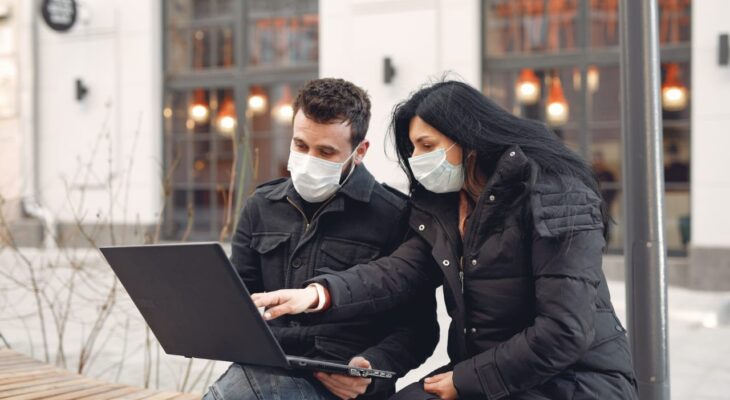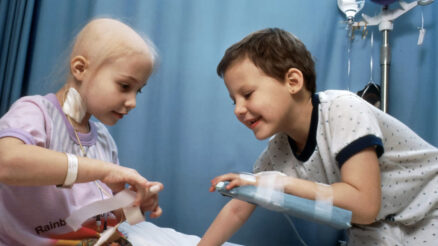The healthcare landscape has been rapidly changing over the years, with technology playing a key role in transforming the way we access and receive medical care. This transformation has become especially crucial in addressing inequalities in healthcare, making it easier for underserved populations to receive necessary care. One of the most notable advancements is the rise of remote healthcare, a concept that has gained significant traction for its ability to provide patients with convenient and effective healthcare solutions. Remote health care, facilitated by telemedicine and remote patient monitoring, offers a multitude of Boomer Benefits that are reshaping the healthcare industry. This shift towards remote healthcare also reduces the strain on overcrowded facilities, ensuring resources are allocated more efficiently to those in critical need.
1. Accessibility and Convenience
One of the most significant advantages of remote health care is its unique accessibility and convenience. Patients no longer need to endure long commutes or sit for hours in crowded waiting rooms. Instead, they can schedule virtual appointments with healthcare providers at a time that suits them, reducing the time and effort required to access medical care. This convenience is particularly beneficial for individuals with mobility issues, those living in remote areas, or individuals with busy schedules. Furthermore, it empowers individuals to seek preventive care and routine check-ups more easily, contributing to the overall improvement of public health by catching and addressing medical issues in their early stages.
2. Timely Medical Attention
Remote care eliminates the need for lengthy appointment scheduling processes, streamlining the healthcare journey for patients. This efficiency is particularly crucial in urgent situations, where immediate medical attention can be a matter of life or death. In the case of minor illnesses or follow-up consultations, remote appointments allow patients to receive timely guidance and treatment recommendations from healthcare professionals, reducing the risk of complications or minor ailments progressing into serious conditions. Moreover, the convenience of remote consultations often means that patients are more likely to seek medical advice promptly, leading to early intervention and better health outcomes. Additionally, the ability to quickly connect with a healthcare provider can relieve patient anxiety, providing reassurance and peace of mind during times of health-related concerns.
3. Cost-Efficiency
Traditional in-person healthcare visits can be expensive, involving costs associated with transportation, parking, and time off work, which can significantly burden patients, especially those with limited financial resources. Remote health care helps patients save money by reducing these expenses, making it a more affordable option. Furthermore, some insurance plans have recognized the value of telemedicine services and now cover them, making them even more cost-effective for many individuals. This means patients can receive necessary medical care without worrying about hefty out-of-pocket expenses, ultimately promoting financial well-being and reducing healthcare-related financial stress. Additionally, the cost savings extend beyond the patients themselves, as this can reduce the financial strain on healthcare systems and providers, making healthcare more sustainable over time.
4. Continuity of Care
Remote health care promotes continuity of care by enabling patients to maintain regular contact with their healthcare providers, fostering a sense of partnership in managing one’s health. This ongoing communication not only provides patients with a deeper understanding of their health but also allows providers to develop a more comprehensive view of each patient’s well-being. It’s particularly beneficial for those with chronic conditions, as remote monitoring can track and analyze vital health data seamlessly. This continuous data collection ensures healthcare providers can detect any concerning trends or deviations from baseline health, enabling them to intervene promptly and make necessary adjustments to the treatment plan. In essence, remote patient monitoring vendor solutions are transforming the way we manage chronic conditions, leading to improved patient outcomes and a better quality of life for those with ongoing health challenges.
5. Reduced Exposure to Illnesses
Remote health care also minimizes the risk of exposure to contagious diseases, making it a safer option for both patients and healthcare providers. Patients can receive medical advice, consultations, and prescriptions without setting foot in a healthcare facility, significantly reducing the likelihood of contracting or spreading infections in waiting rooms or other crowded spaces. This protects patients while contributing to public health efforts to control the spread of infectious diseases. Furthermore, remote healthcare’s ability to maintain healthcare services during pandemics ensures essential medical needs continue to be met, even when in-person visits may be risky or restricted. This adaptability has proven invaluable in times of public health crises, ensuring individuals can access the care they need while minimizing health risks.
6. Enhanced Health Management
Remote patient monitoring empowers patients to actively participate in their health management, putting them in the driver’s seat of their well-being. With the development of wearable trackers and smartphone apps, individuals now have the tools to monitor their vitals, medications, and lifestyle choices. This real-time data keeps patients engaged and provides a holistic view of their health, allowing for more informed decisions about treatment and lifestyle adjustments. Additionally, it encourages a sense of accountability as patients become more aware of their health-related choices and their impact. By sharing this data with healthcare providers, patients can work with practitioners to create more personalized treatment plans and interventions, leading to better health outcomes and enhanced patient satisfaction.
7. Improved Follow-Up Care
After undergoing surgery or a medical procedure, patients often require follow-up care to monitor their recovery progress, ensuring healing is proceeding as expected and complications are quickly addressed. Remote health care simplifies this post-operative monitoring process significantly. Healthcare providers can conduct virtual assessments, including evaluating surgical wounds, tracking vital signs, and addressing any patient concerns, all from a distance. This approach not only reduces the need for unnecessary hospital visits, which can be particularly burdensome for patients recovering from surgery, but it also minimizes the risk of hospital-acquired infections. As a result, patients can experience a smoother and less stressful recovery journey while still receiving the essential care and attention they need to ensure a successful recuperation.
8. Access to Specialist Care
For individuals living in remote or underserved areas, accessing specialist care can be challenging due to geographical barriers and limited healthcare infrastructure. Remote health care bridges this gap by leveraging technology to connect patients with specialists from around the world. Through virtual consultations, patients can benefit from expert medical advice and specialized care without the need for arduous and often costly travel. This accessibility extends not only to urban-rural disparities but also to global healthcare disparities, ensuring patients in regions with limited medical resources can access the expertise they require. Moreover, this exchange of knowledge between healthcare providers in different regions fosters a collaborative approach to medicine, allowing specialists to share insights and best practices, ultimately benefiting patients everywhere.
9. Health Data Insights
Remote health care not only benefits patients but also provides healthcare providers with valuable insights into patient health, changing the practice of medicine. With the help of remote patient monitoring solutions, physicians can access comprehensive health data, creating a more holistic view of the patient’s well-being. This wealth of information enables healthcare professionals to make more accurate diagnoses, tailor treatment plans to individual needs, and proactively intervene to prevent potential health issues from escalating. Additionally, remote patient monitoring can identify trends and patterns over time, aiding in the early detection of health problems and allowing for timely adjustments to care plans. This data-driven approach empowers healthcare providers to deliver more effective and patient-centered care, ultimately improving health outcomes and enhancing the overall quality of healthcare delivery.
Conclusion
As the healthcare industry continues to embrace technology, remote healthcare is emerging as a transformative force that enhances patient experiences and outcomes. Its accessibility, convenience, cost-efficiency, and ability to provide timely and continuous care make it a game-changer. Moreover, the integration of remote patient monitoring offers a data-driven approach to healthcare, ensuring both patients and healthcare providers are equipped with the insights they need to make informed decisions. The future of healthcare is undoubtedly being reshaped by the power of remote healthcare, which brings quality medical services closer to individuals in need, regardless of their location or circumstances. This shift towards remote healthcare also opens up exciting possibilities for research and population health management, as the aggregated data can be used to identify broader health trends and inform public health strategies, further improving the overall well-being of communities.





